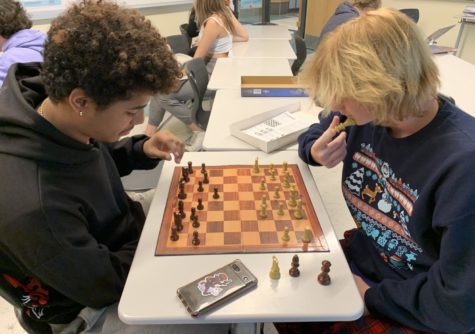The Pros and Cons Applying Early Decision or Early Action
Because choosing a list colleges isn’t enough decisions, students also are plagued with closing when it is best to apply for them.
December 17, 2017
For many students compiling their list of colleges is a stressful and sometimes rushed process. But after they chose their colleges, they have to chose how they’re going to apply.
Students have three, in some cases four, main options of how to apply. Early decision I and II Early action, and regular decisions. Early Decisions are binding, meaning should you get accepted, you have to accept. Early Action is non-binding and you hear back early but still have until May 1st to decide.
Many students fear with Early Decision is the risk of scholarship packages not covering the cost of the rising tuition. This raises the very real concern that students from upper classes have an advantage because they can risk not receiving needed aid for their top school. But lower class families can not.
Roughly 450 colleges have these plans (less than 20%). Some schools have single choice early action, which means it is the only school that the student can apply early to. However, whether it be any of these three plans, it is best that you are thoroughly researched about your schools so you can be prepared and in the best place to make these choices.
Though Early Decision can seem appealing, because at some schools the admission standards can vary. Meaning the acceptance rate is higher for the pool of applicants that applied Early Decision. But it is recommended still that it is a school whose SAT or ACT and GPA requirements are in your range.
Jason Hall, a guidance counselor at Plymouth South, says “the best candidate for early action and decision are the kids that have done their research and our prepared”. Though he will never say no to a kid, he does say that if a student is not ready and is unprepared for the deadlines he will recommend they wait for regular admission.
It may seem daunting at first to make such an extreme decision about your future, but there are many tools to help you. For Example, NACAC, National Association for College Admission Counseling, has a questionnaire to help kids decide if Early Decision is for them.
Also, you can use an estimated family contribution calculator from The College Board or a net price calculator off the the website of the specific college you are looking to apply Early Decision to and calculate how much aid you would be eligible for.
The benefits to these early deadlines are less stress, once you hand them in, you’re done! This year’s senior class at Plymouth South had a larger number of students apply early action than in the past, roughly ¼ of the class applied to that deadline.
If you find that you are a student who has not even compiled a list of schools don’t panic. There are quizzes on College board and Naviance to help you narrow down your choices. For some of us this is one of our most stressful years, but if we apply ourselves and stay focused, it will pay off.









